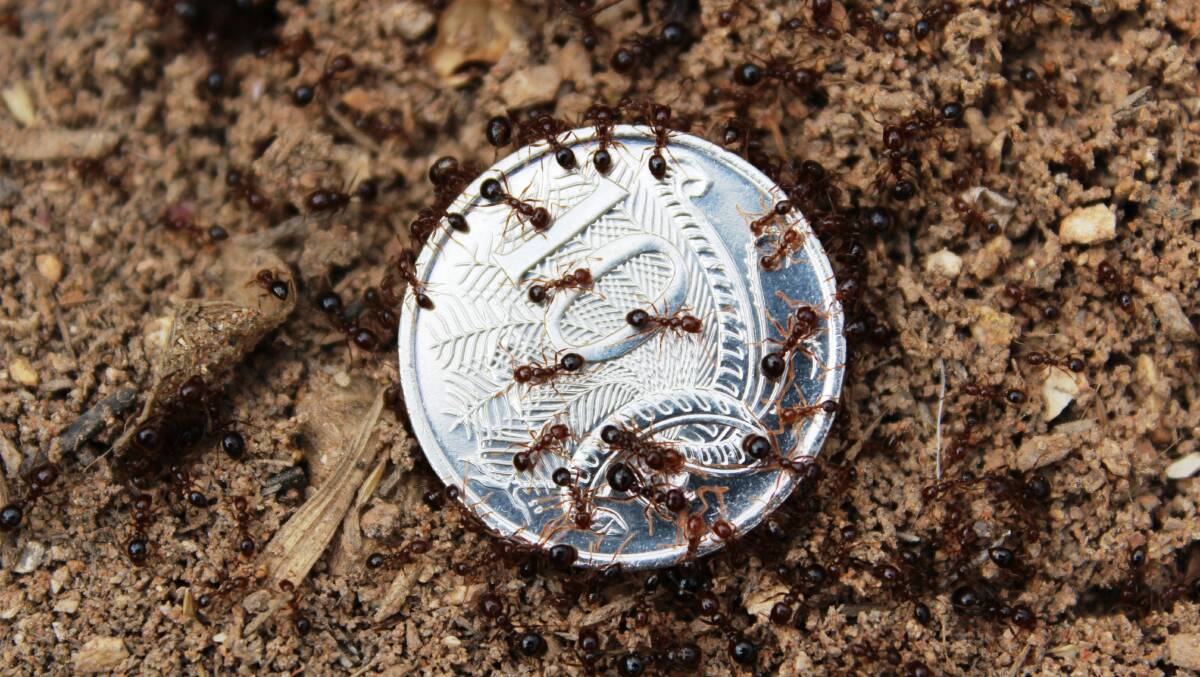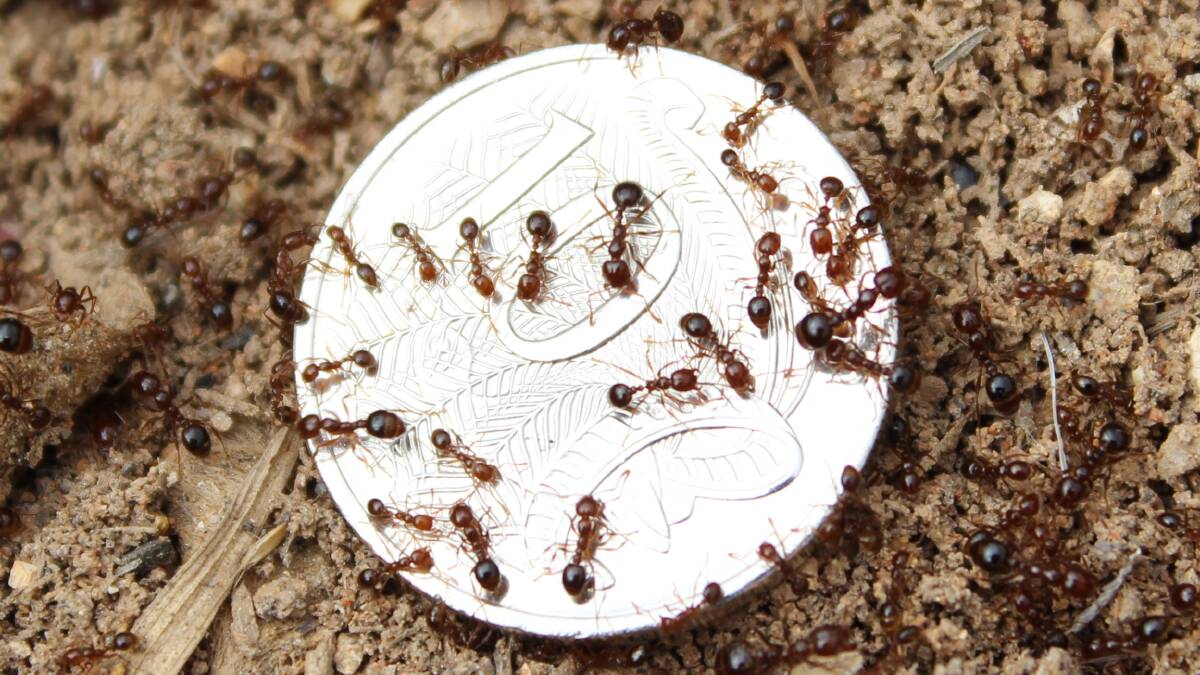Fire Ants Jimboomba: An in-depth exploration into the fiery invaders threatening Jimboomba’s ecosystem, unraveling their history, impact, and the community’s response.
Fire ants, with their venomous stings and aggressive nature, have become a growing concern in Jimboomba. Their presence poses significant ecological and health risks, demanding immediate attention and effective management strategies.
Fire Ants in Jimboomba

Fire ants are a type of invasive ant that has become a major problem in Jimboomba, Australia. They are small, reddish-brown ants that are native to South America. Fire ants were first introduced to Australia in the 1990s, and they have since spread to many parts of the country.
Fire ants are known for their aggressive behavior and their painful stings. They are also known to damage crops and property. In Jimboomba, fire ants have had a significant impact on the local ecosystem. They have caused the decline of native ant species, and they have also had a negative impact on native vegetation.
History of Fire Ants in Jimboomba
Fire ants were first detected in Jimboomba in 2001. They are thought to have been introduced to the area through contaminated soil or plants. Since their introduction, fire ants have spread rapidly throughout Jimboomba. They are now found in many parts of the town, including residential areas, parks, and bushland.
Impact of Fire Ants on the Local Ecosystem
Fire ants have had a significant impact on the local ecosystem in Jimboomba. They have caused the decline of native ant species, and they have also had a negative impact on native vegetation.
- Decline of native ant species:Fire ants are aggressive competitors, and they have caused the decline of many native ant species in Jimboomba. Native ants are important members of the ecosystem, and their decline has had a ripple effect on other species.
- Negative impact on native vegetation:Fire ants can damage native vegetation by feeding on the leaves and stems of plants. They can also spread diseases to plants, which can lead to their death.
Fire Ant Control Methods

Fire ants are an invasive species that can cause significant damage to crops, livestock, and human health. There are a number of different methods that can be used to control fire ants, including chemical, biological, and cultural methods.
Chemical control methods involve the use of pesticides to kill fire ants. There are a number of different types of pesticides that can be used, including baits, dusts, and sprays. Baits are typically the most effective method of chemical control, as they are attractive to fire ants and can be placed in areas where they are likely to feed.
Biological Control Methods
Biological control methods involve the use of natural enemies to control fire ants. There are a number of different natural enemies that can be used, including parasitic wasps, beetles, and fungi. Parasitic wasps are the most effective biological control agent, as they lay their eggs in fire ant larvae, killing the larvae and preventing them from developing into adults.
Cultural Control Methods
Cultural control methods involve the use of management practices to make the environment less favorable for fire ants. These practices can include mowing, grazing, and prescribed burning. Mowing and grazing can help to reduce the amount of vegetation that is available for fire ants to nest in, while prescribed burning can help to kill fire ants and their nests.
Fire ants in Jimboomba are a serious pest problem, but did you know that Bar Therapy Mandurah offers a unique way to relax and unwind? While the fire ants are causing havoc in Jimboomba, you can escape to Bar Therapy Mandurah for a refreshing and rejuvenating experience.
Afterwards, you’ll be ready to tackle the fire ant problem with renewed vigor.
Fire ant control programs can be successful if they are implemented correctly. The most effective programs typically involve a combination of chemical, biological, and cultural control methods. For example, a successful fire ant control program in Texas involved the use of baits, parasitic wasps, and prescribed burning.
The program resulted in a significant reduction in the number of fire ants in the area.
Fire Ant Management Strategies: Fire Ants Jimboomba
Managing fire ants in Jimboomba requires a comprehensive approach involving various stakeholders. A well-defined plan, clear roles and responsibilities, and a robust monitoring system are essential for effective fire ant management.
Stakeholder Roles and Responsibilities
Collaboration among different stakeholders is crucial for successful fire ant management. The following table Artikels the roles and responsibilities of key stakeholders:
| Stakeholder | Roles and Responsibilities |
|---|---|
| Local Government | – Develop and implement fire ant management plans
|
| Residents | – Report fire ant infestations
|
| Businesses | – Implement fire ant control measures on their premises
|
| Environmental Groups | – Advocate for environmentally responsible fire ant management practices
|
Monitoring and Evaluation
A monitoring system is essential to track the progress of fire ant management efforts. The system should include the following components:
- Regular surveys to monitor fire ant populations and distribution
- Assessment of the effectiveness of control measures
- Evaluation of the environmental impact of control measures
- Reporting of results to stakeholders
The data collected through the monitoring system will be used to adapt and improve fire ant management strategies over time.
Community Engagement
Engaging the Jimboomba community is crucial for successful fire ant management. By actively involving residents, local businesses, and organizations, we can foster a collective responsibility and empower the community to take ownership of the issue.
To develop an effective engagement strategy, we must first identify key stakeholders and their roles. This includes local government, community groups, schools, businesses, and landowners. Each stakeholder has a unique perspective and can contribute to the management effort.
Education and Awareness, Fire Ants Jimboomba
Educating the community about fire ants is essential for fostering understanding and promoting responsible behavior. We can utilize various methods to disseminate information, such as:
- Public forums and community meetings
- School programs and educational materials
- Social media campaigns
- Community newsletters and local newspapers
- Collaboration with local businesses to display educational materials
Fire Ant Research

Fire ant research is a rapidly growing field, as scientists seek to better understand the biology, behavior, and impact of these invasive pests. Research efforts are focused on developing new and improved methods for controlling fire ants, as well as understanding their potential impact on human health and the environment.
One of the most important areas of fire ant research is the study of their biology. Scientists are working to understand how fire ants reproduce, feed, and communicate. This information is essential for developing effective control methods that target specific aspects of their life cycle.
Jimboomba’s notorious fire ants have been wreaking havoc, but don’t fret! While we deal with these tiny terrors, let’s not forget about the Snapchat conundrum: “What does MSL mean?” To decipher this cryptic acronym, head over to What Does Msl Mean Snapchat . Once you’ve cracked the code, you can return to the ant-infested battleground of Jimboomba, armed with knowledge and a healthy dose of insect repellent.
Gaps in Knowledge
Despite the progress that has been made in fire ant research, there are still many gaps in our knowledge. For example, we do not fully understand how fire ants spread from one area to another. We also do not know how to effectively control fire ants in all situations.
Proposed Areas for Further Study
There are a number of areas where further research on fire ants is needed. These include:
- The development of new and improved control methods
- The study of fire ant biology and behavior
- The assessment of the impact of fire ants on human health and the environment
Resources for Accessing Fire Ant Research Findings
There are a number of resources available for accessing fire ant research findings. These include:
- The USDA National Invasive Species Information Center
- The University of Florida Fire Ant Research Laboratory
- The Texas A&M University Fire Ant Research Laboratory
Conclusion
Managing fire ants in Jimboomba requires a multifaceted approach involving community engagement, research, and targeted control measures. By working together, the community can mitigate the impact of these invasive pests and protect the local ecosystem.
Key Questions Answered
What are fire ants?
Fire ants are small, reddish-brown ants known for their aggressive behavior and painful stings. They are native to South America but have become invasive in many parts of the world, including Australia.
How did fire ants arrive in Jimboomba?
Fire ants were accidentally introduced to Jimboomba through imported goods. They have since established colonies in various parts of the region.
What is the impact of fire ants on the Jimboomba ecosystem?
Fire ants disrupt the local ecosystem by preying on native insects, displacing other ant species, and damaging vegetation. They can also pose a threat to pets and livestock.